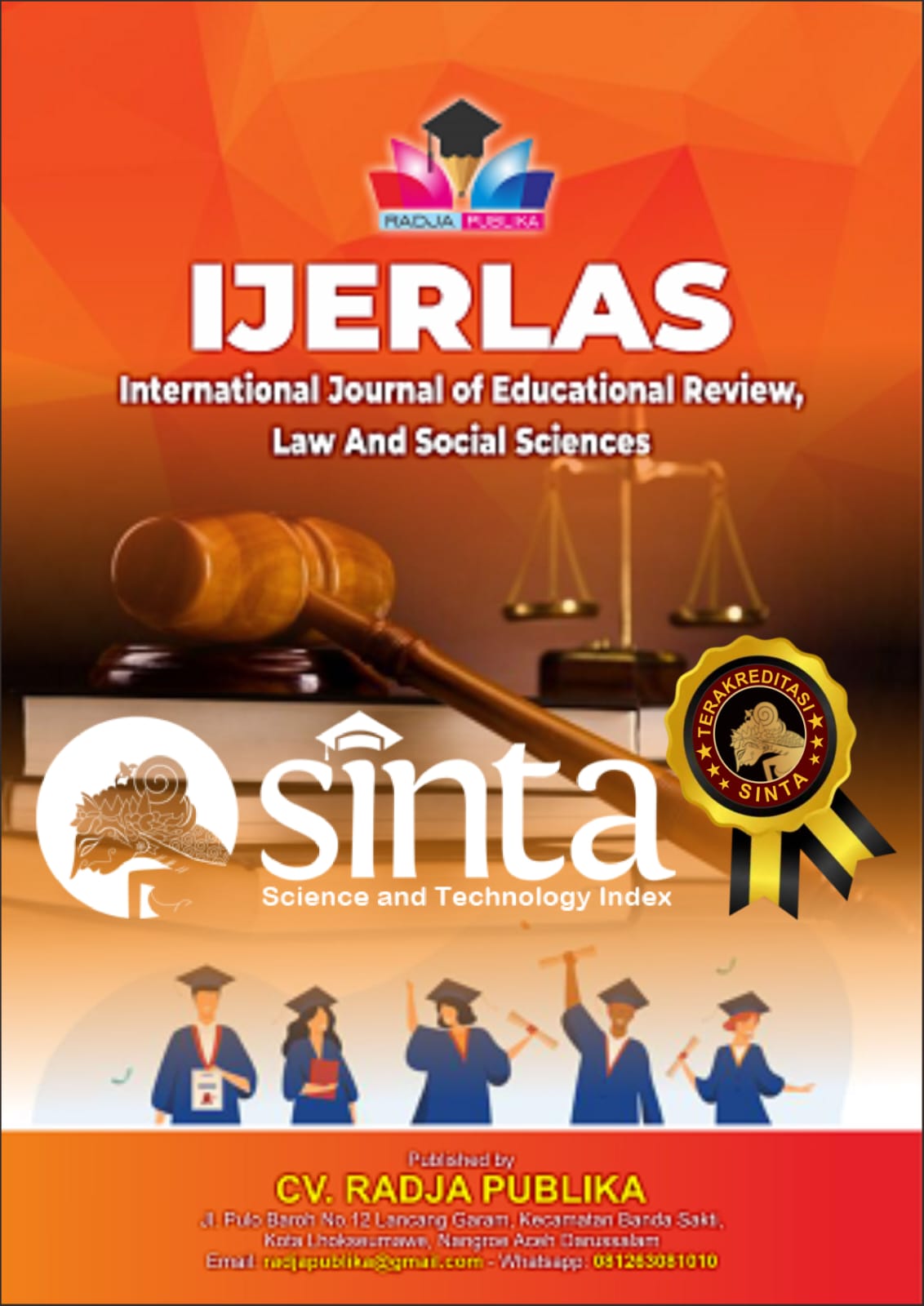Key Factors In The Home Environment Contributing To The Low Pass Rates Of Primary Students In Selected Schools In Marondera District: A Comprehensive Review Using A Decision-Oriented Model
Main Article Content
Chrispen Chiome
Prisca Mtizwa
This article uses a decision-oriented model to provide a comprehensive review of the key factors in the home environment of learners contributing to the low pass rates of primary students in selected schools in the Marondera District. The home environment plays a significant role in shaping a child's academic achievement, and various factors contribute to this influence. This review examines the relationship between home environment and academic performance, highlighting the key factors that impact learners' success. The study’s design was embedded mixed-methods research design. The sample comprised of two hundred and sixteen respondents and participants who were randomly and purposively selected. The study’s data collection and generation instruments were the questionnaire, document analysis, interview and observation. Qualitative data was analysed using the traditional thematic content analysis and quantitative data wase analysed using statistical methods. The key findings include parenting styles, education of parents, financial position of parents, resources for education in the home, attitudes of parents towards schooling, socio-economic context environment and parents’ conflict. The research concluded that there were serious impediments in the home environment that has affected learners. The study recommends multifaceted approach that also upgrades the school environment as a way of improving the pass rate of the children in this study. The study also recommends a vast supply of safety nets and equitable distribution thereof. As well as encouraging parents to create a home that is conducive for their children’s access to quality education.
• Amankwaa, L. (2016). Creating protocols for trustworthiness in qualitative research, Journal of Cultural Diversity, 23(3), 121-127. http://www.tuckerpub.com/jcd.htm
• Annie E. Casey Foundation (2013). The First Eight Years: Giving Kids a Foundation for Lifetime Success. Available at: https://www.aecf.org/resources/the-first-eight-years-giving-kids-a-foundation-for-lifetime-success
• Ansari, A. (2024). Economic hardship and the role of cost in childcare decisions. Retrieved from https://www.sciencedirect.com/science/article/abs/pii/S0190740924003335.
• Bischoff, K., and Tach, L. (2018). The racial composition of neighborhoods and local schools: The role of diversity, inequality, and school choice. City Community 17, 675–701. Doi: 10.1111/cico.12323
• Braitstein, P. (2020). The Effects of Parental Absence on Children Development. Retrieved from https://pmc.ncbi.nlm.nih.gov/articles/PMC7559575/.
• Chetty, R., and Hendren, N. (2018). The impacts of neighborhoods on intergenerational mobility II: County-level estimates. Quarterly Journal of Economics. 133, 1163–1228. Doi: 10.1093/qje/qjy006
• Chiome C. (2023), “Averting, fending off and deflecting learning gaps before entrenchment: Promising student support strategies used by teachers in selected Zimbabwean schools”. The Independent Journal of Teaching and Learning. In press.
• Cresswell, J. & Cresswell, W. (2018), Educational research: Planning, conducting, and evaluating quantitative and qualitative research 4th ed. Upper Saddle River, NJ; Pearson Education.
• Cresswell, J. (2023), Research Design: Qualitative, Quantitative, And Mixed Methods Approaches, 4th Edition. SAGE Publications, Inc
• Devi, R. K. (2022), Learning loss and learning gaps and its impacts in the academic achievements through online examination of students in getting quality education at tertiary level. International Journal of Innovative Research in Technology; 8 (12); 479-483.
• Elenbaas, L., (2021). It's All in the Family: Parents' Economic Worries and Youth's Retrieved from https://link.springer.com/article/10.1007/s10964-021-01393-4.
• Finney, T. L. (2020). Confirmative evaluation: The new CIPP model. Dissertation submitted to the Graduate school of the Wayne State University. chrome-extension://efaidnbmnnnibpcajpcglclefindmkaj/https://education.wayne.edu/eer_dissertations/confirmative_evaluation_a_new_cipp_model_dissertation_final.pdf
• Gasva, D. & Moyo, W. (2017). Teachers’ Views Regarding the Adoption of the New Curriculum in Zimbabwe: Fostering Quality in Education and/or National Developmental Needs. Scholars Journal of Arts, Humanities and Social Sciences. 5 (5), 455-462. DOI: 10.36347/sjahss.2017.v05i05.005
• Harrison, L. (2025). Research Confirms That Chores Are Good for Kids | Psychology Today. Retrieved from https://www.psychologytoday.com/us/blog/evidence-based-living/202503/research-confirms-that-chores-are-good-for-kids.
• Housing Matters (2024). How Housing Instability Affects Children’s Health and Development. Retrieved from: https://housingmatters.urban.org/articles/how-housing-instability-affects-childrens-health-and-development
• Khan, N. F. Begum, M., & Imad, M. (2019). Relationship between Students’ Home Environment and their Academic Achievement at Secondary School Level. Pakistan Journal of Distance & Online Learning V, (II), 223-234. chrome-extension://efaidnbmnnnibpcajpcglclefindmkaj/https://files.eric.ed.gov/fulltext/EJ1266643.pdf
• Kober N. (2015). Reaching Students: What Research Says About Effective Instruction in Undergraduate Science and Engineering. Board on Science Education, Division of Behavioral and Social Sciences and Education. Washington, DC: National Academies Press.
• Mensah, R. O., Acquah, A., & Mensah, D. Y. (2024). Investigating the impact of home factors on junior high school girls’ academic performance in peri-urban areas: a case study of Dome cluster of schools. Cogent Education, 11(1). https://doi.org/10.1080/2331186X.2024.2329416
• Mistry, R. S., (2023). Children experienced more stress from family finances than school Retrieved from https://publichealth.berkeley.edu/news-media/research-highlights/children-experienced-more-stress-from-family-finances-than-school-closures-during-covid-19.
• Patel, B., Singh, A., & Vaishnav, K. (2024). A Review of the Relationship between Home Environment and Academic Performance among College Students. The International Journal of Indian Psychology 12 (2), April- June 2024. DOI: 10.25215/1202.297
• Schlecht, J. (2024). The Effect of Family Structure on Student Achievement and Well-Being (Thesis, Concordia University, St. Paul). Retrieved from https://digitalcommons.csp.edu/teachereducation_masters/101
• Sinha A, Lombe M, Saltzman LY, Whetten K, Whetten R; (2016). Positive Outcomes for Orphans Research Team. Exploring Factors Associated with Educational Outcomes for Orphan and Abandoned Children in India. Global Society and Welfare. 3(1):23-32. Doi: 10.1007/s40609-016-0043-7.
• Smith, J. (2019). Challenges faced by children with ADHD. Journal of Child Psychology, 45(2), 123-145. https://files.eric.ed.gov/fulltext/ED602569.pdf
• Sonya, A (2025). Stable Housing Is Foundational to Children’s Well-Being, Retrieved from: https://www.cbpp.org/blog/stable-housing-is-foundational-to-childrens-well-being
• Stewart C. (2025). School’s neighbourhood environment affects academic outcomes. retrieved from: https://publichealth.msu.edu/news-items/research/241-school-s-neighborhood-environment-affects-academic-outcomes
• Zhao, L and Zhao W. (2022). Impacts of family environment on adolescents’ academic achievement: The role of peer interaction quality and educational expectation gap. https://www.frontiersin.org/journals/psychology/articles/10.3389/fpsyg.2022.911959/full
• Wang, F., (2022). Does Housework Help Improve Academic Performance? Retrieved from https://files.eric.ed.gov/fulltext/EJ1336422.pdf.




























